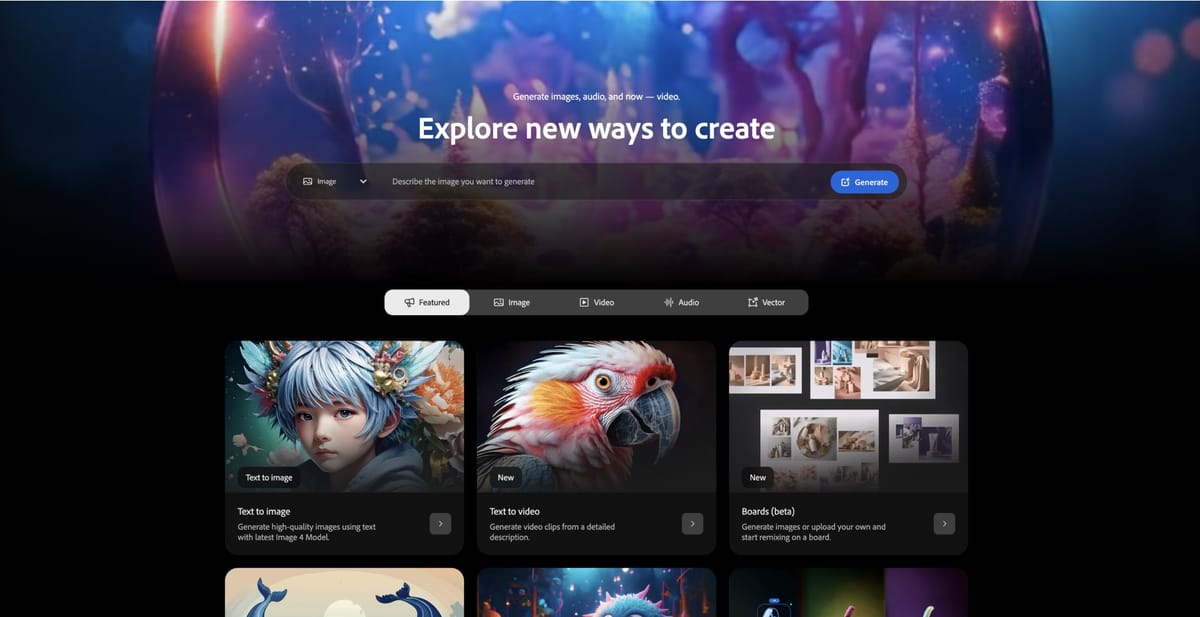
At its MAX London event today, Adobe dropped over a hundred updates and new features that signal the company’s ambition to be the go-to platform for AI-assisted creativity. Adobe Firefly, the company's flagship AI platform got a major redesign and soon will have a mobile version for creators on the move.
Key Points:
- New Firefly Image Model 4 and Video Model are now generally available
- Firefly mobile app announced for iOS and Android
- Firefly Boards introduced for AI-powered ideation and moodboarding
- AI upgrades integrated across Photoshop, Illustrator, Express, Premiere Pro and more
The star of the show was Firefly Image Model 4, which delivers lifelike, 2K-resolution image generation with granular control over styles, structure, and even camera angles. A souped-up variant, Image Model 4 Ultra, takes things a step further with the ability to render intricate scenes packed with fine details. These are now joined by the Firefly Video Model, Adobe’s first commercially safe, production-ready text-to-video tool, which is also available to all users. It can generate 1080p footage, custom camera shots, and motion design from a simple prompt.
To complement the content creation pipeline, Adobe introduced Firefly Boards — an AI-first surface for moodboarding and collaborative ideation, now in public beta. Think of it as a shared sandbox where teams can rapidly remix images, align on concepts, and jump directly into production. Firefly also now includes a Vector Model that can produce fully editable artwork, from logos to product packaging, from natural language prompts.
Importantly, Adobe’s Firefly web app now supports not just its own models, but also gives users the ability to switch between third-party models from OpenAI, Google (Imagen 3 and Veo 2), and Flux, with plans to integrate more in the coming months. Each piece of generated content includes Content Credentials, showing which model was used and what rights the creator retains — a key pillar in Adobe’s pitch to creators who want to maintain control of their work.
Beyond Firefly, nearly every flagship Creative Cloud product got upgraded. In Photoshop, new Firefly-powered tools like Composition Reference allow creatives to generate content structured like a reference image, while Select Details and Adjust Colors make intricate editing tasks faster. Illustrator now includes Text to Pattern and Generative Shape Fill, speeding up design iteration. Premiere Pro adds Generative Extend and Media Intelligence, the latter capable of searching terabytes of footage by content. Adobe Express also gets social-media-ready tools like Clip Maker and Enhance Speech.
And Adobe isn’t stopping there. It rolled out APIs for text-to-image, text-to-video, and avatar generation through its Firefly Services, aimed at helping businesses scale creative production. At the same time, it introduced the Adobe Content Authenticity app — a public beta tool that allows users to attach verifiable credentials to their creations and even opt out of AI training datasets.
Adobe is in an interesting position: embracing AI's transformative potential while simultaneously trying to protect the creative professionals who have long been its core audience. The updates show a company adapting quickly to market realities while attempting to maintain its dominant position in creative software.

